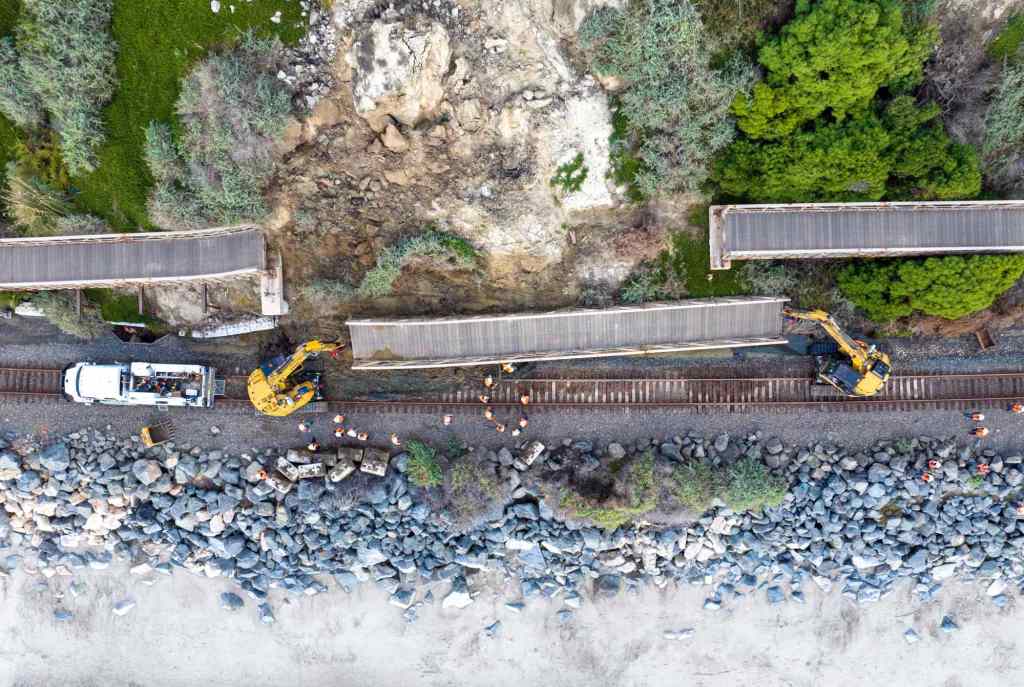Is California’s decentralized approach to transportation preventing local rail service from reaching its full potential?
That’s what several state legislators are suggesting as they ask for increased state leadership in managing the Los Angeles–San Luis Obispo–San Diego rail corridor.
The forecast of the 351-mile rail corridor, stretching from San Luis Obispo to San Diego, is dismal, the legislators said in a letter to the California State Transportation Agency earlier this month. While it once completed more than 8.3 million passenger trips at its peak in 2019, it is now making fewer than 4 million trips annually, they said.
“The corridor cannot provide the level of service needed to attract and retain ridership while facing prolonged track closures, unreliable service, infrequent trains and poor rider experience,” said the letter, signed by seven state senators, including Sen. Catherine Blakespear, D-Encinitas. “The time is now for increased state leadership.”
Track closures in San Clemente due to landslides have been a recurring theme in that vulnerable region, where the train runs along the coast. On Jan. 24, another landslide sent debris onto the railroad tracks, shutting down the rail line for about a 34-mile stretch indefinitely.
Metrolink, the commuter rail service managed by the Southern California Regional Rail Authority, is unable to secure enough shuttles or buses to shuttle commuters between Orange County and Oceanside while the trains are halted, said spokesperson Scott Johnson.
“Neither private nor public bus agencies in the region have a surplus of operators and equipment to provide the minimum 20 buses and up to 40 operators that would be needed to provide alternate transportation for train service between 4 a.m. and 9 p.m. with less than 12 hours notice,” Johnson said.
There have been several landslides in the area in the past year, including ones at the south end of San Clemente that caused the rail line to be closed…
Read the full article here







